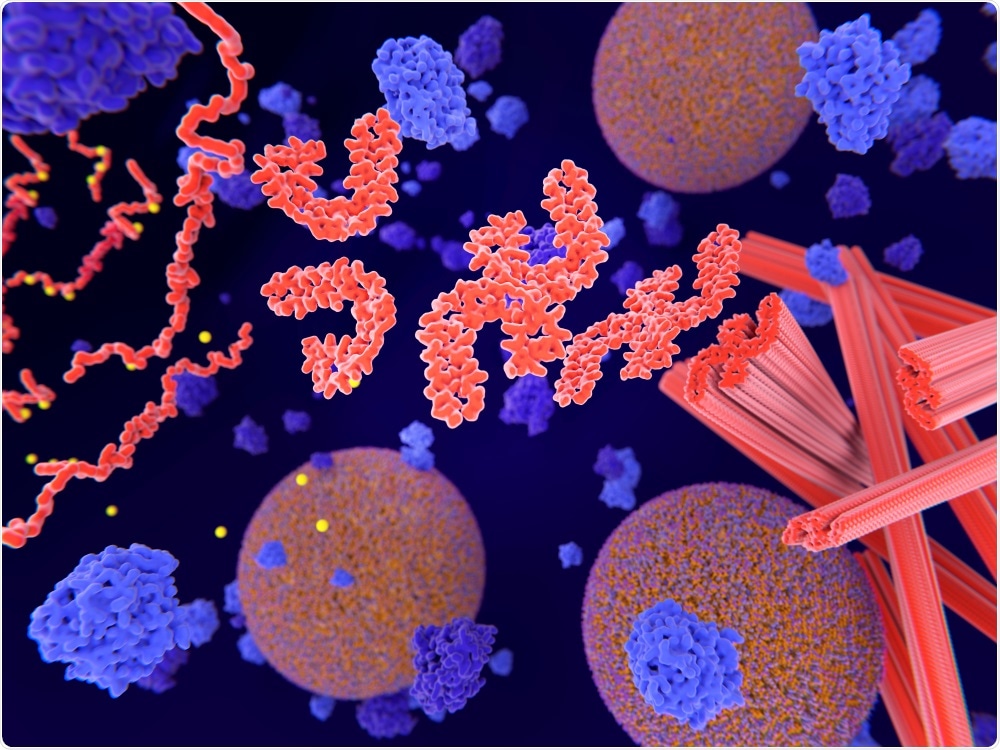A genetic engineering approach has helped scientists to drastically decrease the levels of tau—a crucial protein accumulating and getting tangled in the brain when Alzheimer’s disease develops—in an animal model of the condition.

Tau Protein. Image Credit: Juan Gaertner/Shutterstock.com
The findings of the study, achieved by investigators at Massachusetts General Hospital (MGH) and Sangamo Therapeutics Inc., could pave the way for a prospectively promising treatment for patients suffering from this deadly illness.
The new approach, described in Science Advances, involves using a gene regulation technology known as zinc finger protein transcription factors (ZFP-TFs)—DNA-binding proteins that can be tapped to target and influence the expression of certain genes.
In this instance, the therapy was developed to target and inhibit the expression of the gene that codes for tau. Mice suffering from Alzheimer’s disease were administered a single injection of the treatment—in which a harmless virus was used to deliver the ZFP-TFs to cells—directly into the brain’s hippocampus region or intravenously into a blood vessel.
The use of ZFP-TFs for the treatment decreased tau protein levels in the brain by 50%–80% in 11 months, which is the longest time point ever studied. Crucially, the therapy reversed a few of the Alzheimer’s-associated damage present in the brain cells of the animals.
The technology worked just the way we had hoped—reducing tau substantially for as long as we looked, causing no side effects that we could see even over many, many months, and improving the pathological changes in the brains of the animals. This suggests a plan forward to try to help patients.”
Bradley Hyman, MD, PhD, Study Senior Author and Director, Alzheimer’s Disease Research Unit, MassGeneral Institute for Neurodegenerative Disease
The therapy is a specifically attractive strategy due to its simplicity.
This was the result of a single treatment of gene regulation therapy, which could be given by an injection into the bloodstream. While this therapy is far from patients—as much more development and safety testing would need to be done—it is a promising and exciting first step.”
Bradley Hyman, MD, PhD, Study Senior Author and Director, Alzheimer’s Disease Research Unit, MassGeneral Institute for Neurodegenerative Disease
Source:
Journal reference:
Wegmann, S., et al. (2020) Persistent repression of tau in the brain using engineered zinc finger protein transcription factors. Science Advances. doi.org/10.1126/sciadv.abe1611.